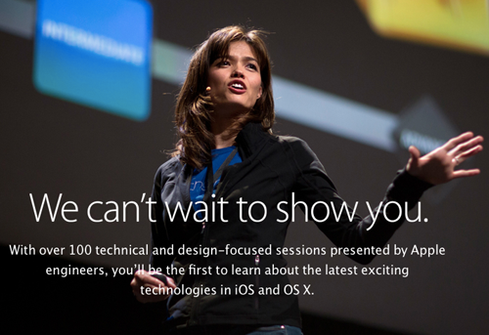Mobile Health App Design: 5 Tips
Mobile apps for doctors and patients hold the promise of better health management. Here are five things app designers should keep in mind.


Apple WWDC 2014: 9 Things To Expect
Apple WWDC 2014: 9 Things To Expect (Click image for larger view and slideshow.)
The race to lure customers with unique mobile experiences is heating up as mobile adoption rates in developed countries reach a saturation point. In healthcare, the proliferation of mobile devices (think: phones, tablets, biometric devices, and bar code scanners) has begun to introduce efficiencies and enhancements across the care continuum.
An HIMSS survey finds 45% of clinicians are using mobile technology to communicate across care teams, collect and aggregate data, and monitor and communicate with patients. Mobile technology also provides patients with access to information, tools, and services that enable a more active role in the management of their own -- as well as their families' -- health.
[What are the tradeoffs of greater patient involvement? Read Healthcare Consumerization: Side Effects May Include...]
That said, as new designs are implemented, organizations must consider both the core user characteristics and needs, and the unique capabilities and limitations, of each mobile channel and device. "Mobile-appropriate" experiences live at that intersection:
1. Be prepared for BYOD
More doctors and nurses are bringing their own mobile devices to work. Although nearly one-third of health IT professionals surveyed by HIMSS say their organizations support only the devices they provide, more than one in five organizations supports personal devices enabled for work activities. Healthcare IT departments should continue to find ways to extend valuable mobile physician experiences to a variety of institutional and personal devices so healthcare workers are able to use the tools most easily accessible to them.
2. Design for the device
"Responsive" web design -- design that dynamically responds to the screen size of the device being used for comfortable viewing -- has advantages but also limitations. You might not need to go as far as building a native application. However, consider building a device-specific mobile web product for phone, tablet, or both. The benefits of a tailored user experience might offset the additional development cost and resources required to maintain multiple code bases.
3. Remember the masses
According to a 2013 report, 41% of households with an annual income of less than $25,000 do not have access to broadband. As telemedicine becomes a prevalent mode of care, consider extending provider services through an optimized mobile experience, not just desktop.
4. Security -- and caregiver support -- are paramount
As patient records are increasingly augmented with caregiver information, being able to securely and privately share information back and forth between those that manage information and those that own patient records will become more important. Think carefully about how to include caregivers and others who support patients when it comes to better access and flow of information.
5. Device to desktop and back
Reports show that 90% of consumers start a task on one device and finish it on another. While designing mobile experiences, think about the user flow between devices as well as the best use of each device. The more seamless the experience across devices and platforms, the better.
Has meeting regulatory requirements gone from high priority to the only priority for healthcare IT? Read Health IT Priorities: No Breathing Room, an InformationWeek Healthcare digital issue.
About the Author(s)
You May Also Like






